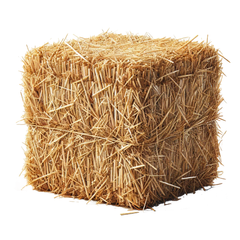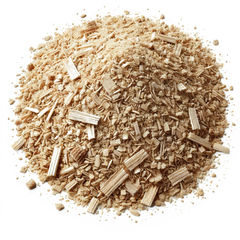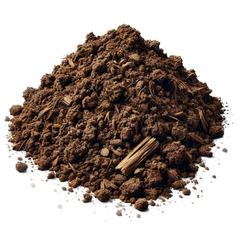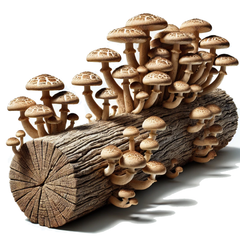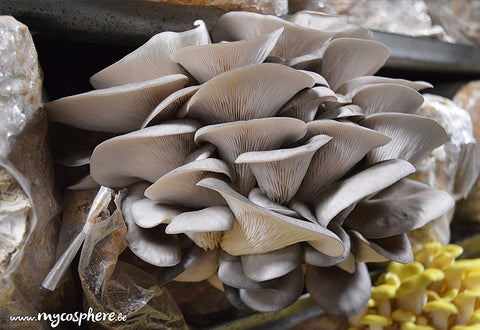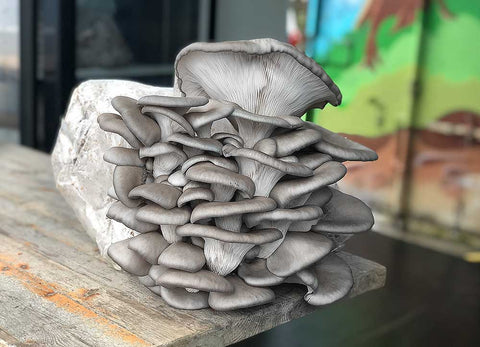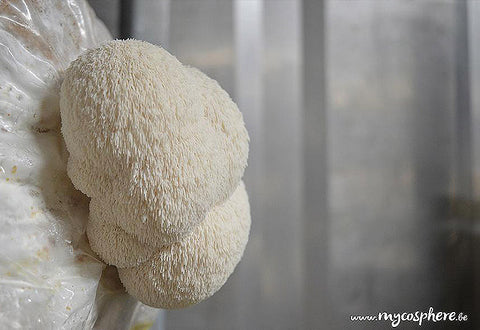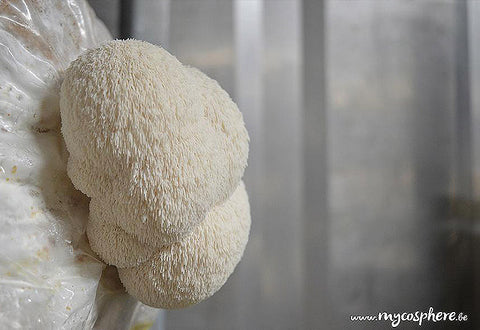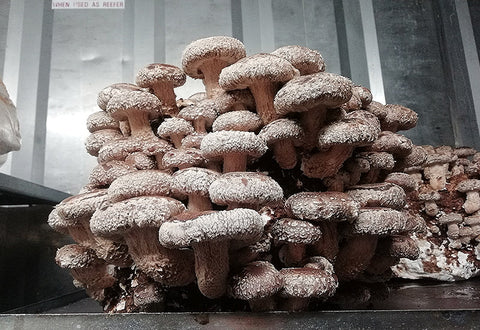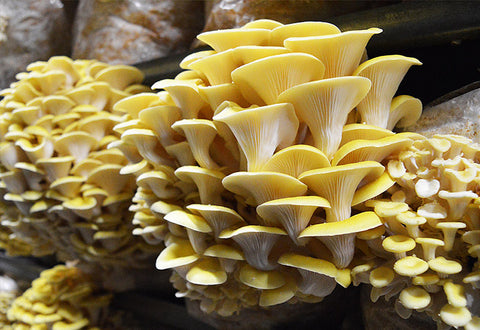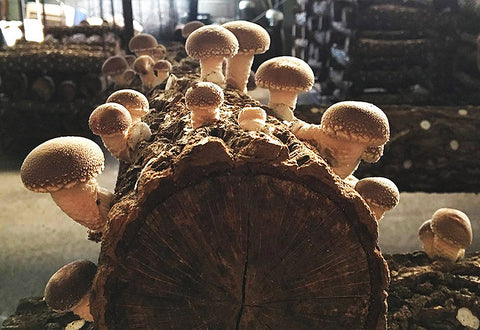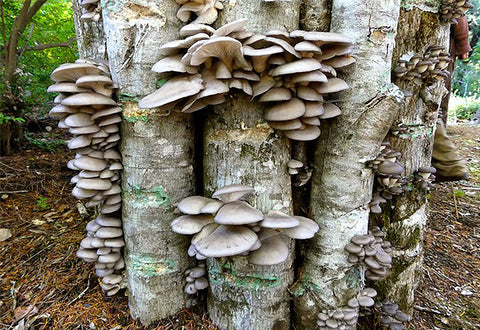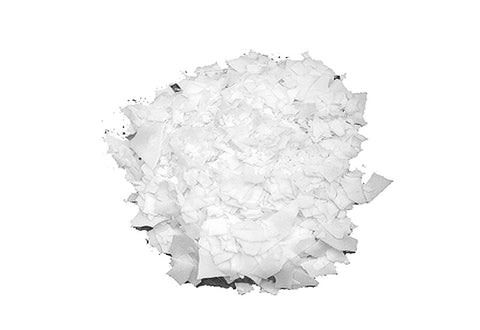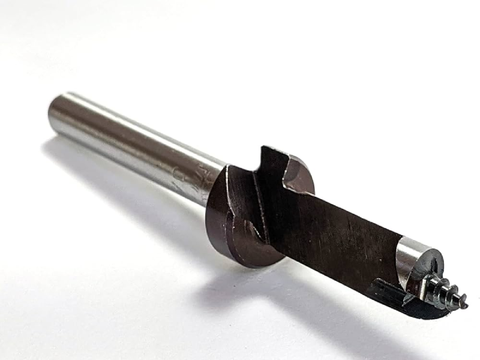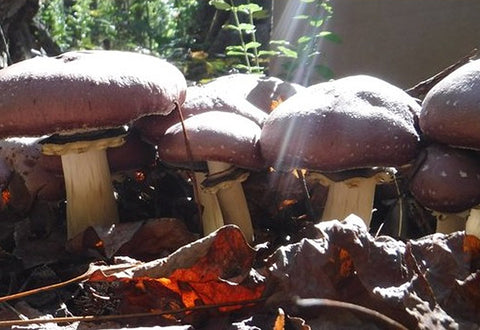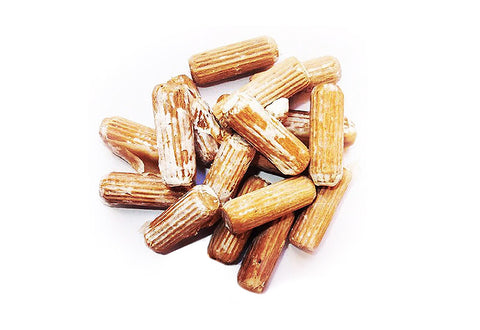Growing indoors
Our grain mycelia can be used for indoor cultivation and outdoor cultivation.
The substrates used generally consist of a carbon base such as straw, sawdust, or fresh wood logs. Most of the mycelia we offer are lignivorous: they decompose wood.
A substrate can be enriched with different materials richer in nitrogen such as wheat bran, alfalfa or coffee grounds. This makes it possible to increase harvests, while revalorizing certain co-products and possibly integrating a circular dimension to mushroom production.
However, you should know that the richer a substrate is in nitrogen and sugars, the more favorable it will be to the development of bacteria and mold and the risk of contamination will therefore be higher.
To reduce this risk, we generally carry out pasteurization or sterilization of the substrates, that is to say that we heat the substrate to a certain temperature which allows the sufficient or total elimination of micro-organisms which compete with our mycelia. These microbes are generally bacteria or molds, which feed on the same substrates as our mycelia.
After pasteurization and cooling of the substrate, inoculation (=seeding) is carried out in the cleanest possible conditions to avoid bringing new mold or bacteria into the substrate.Depending on the types of substrates, the varieties, the mycelia, the commercial or amateur dimension of the culture, it is sometimes possible to do without pasteurization. However, the risks of seeing green mold develop in place of our beautiful mushrooms are then higher. There's nothing like experience to get your fungal hand under control.
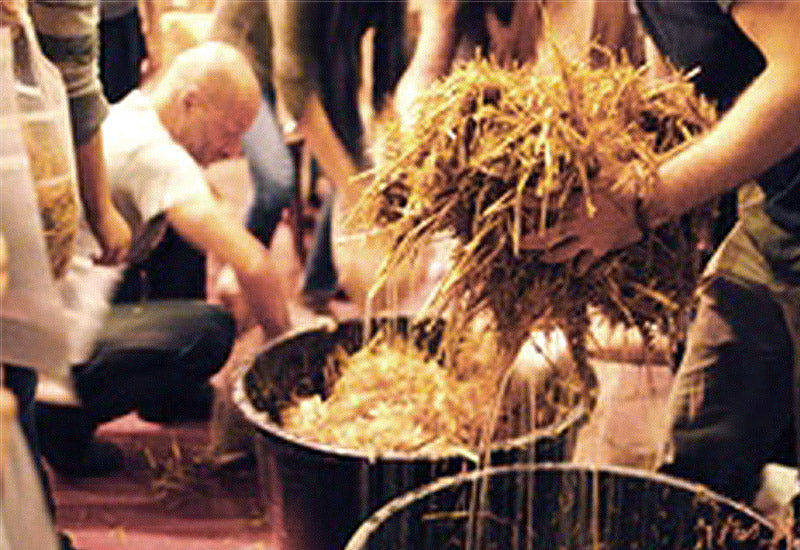
Example 1: Growing oyster mushrooms on straw
Ideally use crushed straw. Soak the straw in hot water (+-75°) for 30 to 60 minutes. After cooling, crumble the mycelium and mix it with the straw at a rate of 5 to 10% mycelium compared to the wet straw.
The substrate is placed in waterproof containers (plastic bags, buckets, etc.), but provided with small openings to allow the mycelia to breathe. The substrates are incubated for 2-3 weeks at 20-25° before fruiting.
Note: There is an alternative technique to heat pasteurization which is lime pasteurization. To do this, use slaked lime (white lime lime). Mix one cup for approximately 50 liters of water.
Soak the straw overnight (12 hours) in this lime water. This will allow the straw to moisten and increase its Ph (=basify), which will create an environment not very conducive to the development of bacteria or mold and rather conducive to the development of oyster mushroom mycelium.
You can also use our organic straw pellets , which are already pre-pasteurized and ideal for growing oyster mushrooms.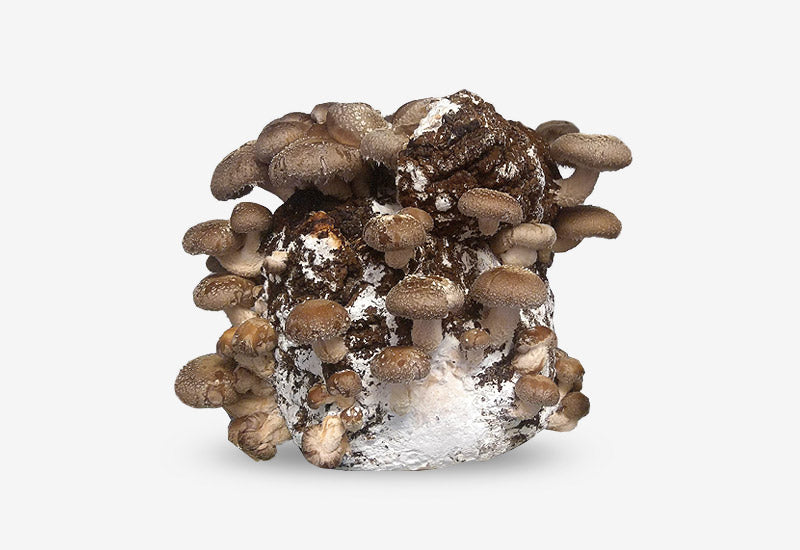
Example 2: Growing shiitake on sawdust or wood pellets.
In a 3T unicorn bag , put 1kg of dry sawdust. Prefer hardwoods such as oak or beech. You can also use firewood pellets with a maximum of 20% softwood.
Boil 1.5 liters of water and mix in the bag with the sawdust. The ideal is to maintain a core temperature of 90° for at least 1 hour. Depending on the characteristics of your sawdust, it will sometimes be necessary to add or reduce the quantity of water. You need to reach around 60% humidity, without having any stagnant water in the bottom of the bag.
Wait for the bag to cool completely. During this time, leave the bag closed and only open when necessary to prevent the entry of contaminants. Add 250 g of shiitake mycelium on grains (10%).
Close the bag leaving air inside the bag. You can use a sealer, tape, or rope to tie a knot.
Mix the substrate by shaking the bag so as to distribute the grains throughout the substrate. Incubate the bag at a temperature of +-20° for 10 to 12 weeks.
Remove the bag. Keep the substrate moist, if necessary with a small grow tent. Harvest, enjoy.
Growing outdoors
Substrates are generally composed of straw, wood shavings, or wood logs. The idea can be for example to enhance a shaded part of your land, crushing branches, cutting certain trees, mulching certain areas of the vegetable garden, etc.
Outdoors, the presence of other naturally present fungi and bacteria increases competition and the risk of contamination of the substrate. Therefore, the recommended seeding rate is around 20%, in order to increase the chances of success.
Cultivation on logs is relatively accessible because it requires little equipment initially. The risk of contamination is rather low. The main factor is the humidity of the logs. If conditions are favorable, crops on logs or stumps can last 5 to 10 years.
Cleanliness tip: wash your hands well with soap before opening the bag, clean all surfaces and tools that will be in contact with the mycelium and the pasteurized substrate to increase the chances of success .
Documentation to download to go further:
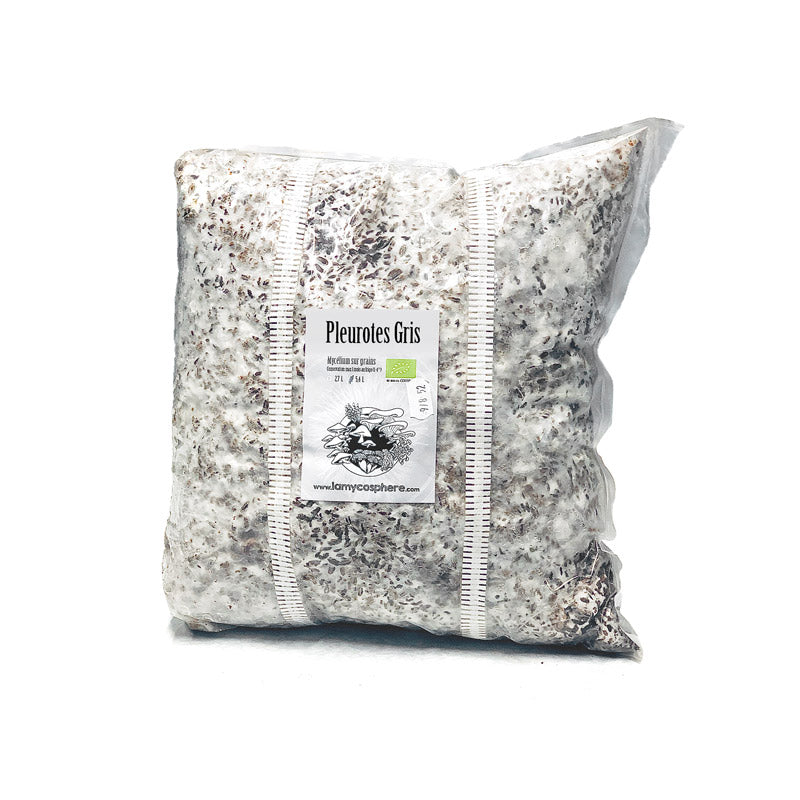
About our organic mycelia:
What we call our mycelia, or our “mushroom spawn” (mushroom seeds) are made up of grains and are used to sow substrates.
Storage: When you receive them, we advise you to use them quickly. If you do not plan to use them within 4 to 5 days, we advise you to put them in the fridge (1-5°) where you can keep them for several weeks. We then advise you to use them within 4 weeks.
We are not a purchase-resale site, we produce 100% of our mycelia in our facility in Grez-Doiceau (Belgium). Some of our strains are selected directly from the nature around us, others come from other producers recognized in the field. We select our strains according to different criteria such as their vigor and their natural resistance to diseases, their taste quality, their productivity, their visual quality, etc.
We maintain the potential and vigor of our strains by regular cultivation of mushrooms in non-sterile environments, and then their reproduction in a sterile laboratory environment, which allows us to guarantee the purity of our strains.
An organic label: All of the ingredients used in production are certified organic by Certisys, and this is how we can certify our mycelia with the organic label .
Lead times: Most of our mycelia are produced to order, so there is usually a production lead time of 2 to 3 weeks. This allows them to be sent at peak strength as soon as incubation is over, without having to store them in the fridge. They then resist transport conditions much better.

